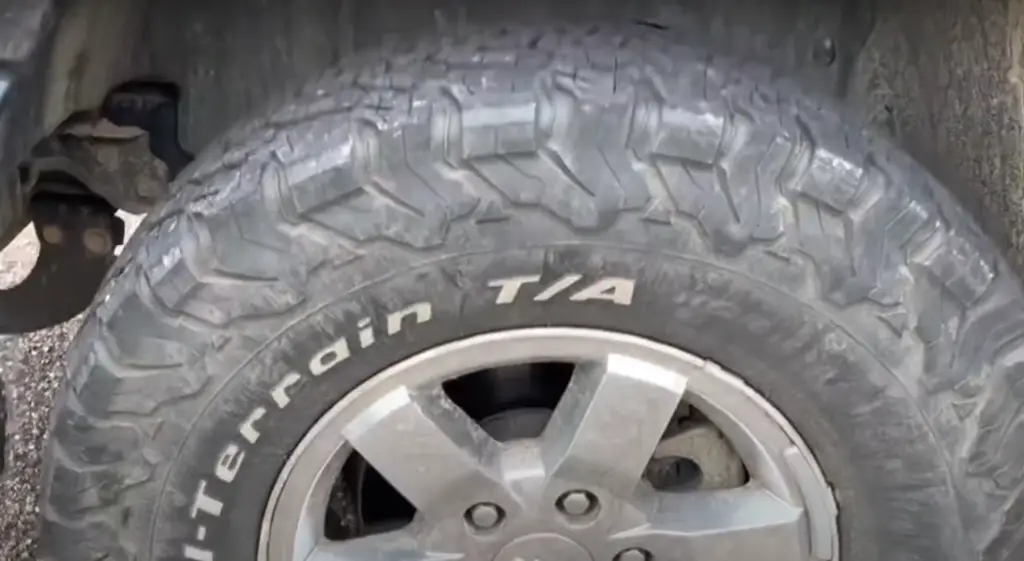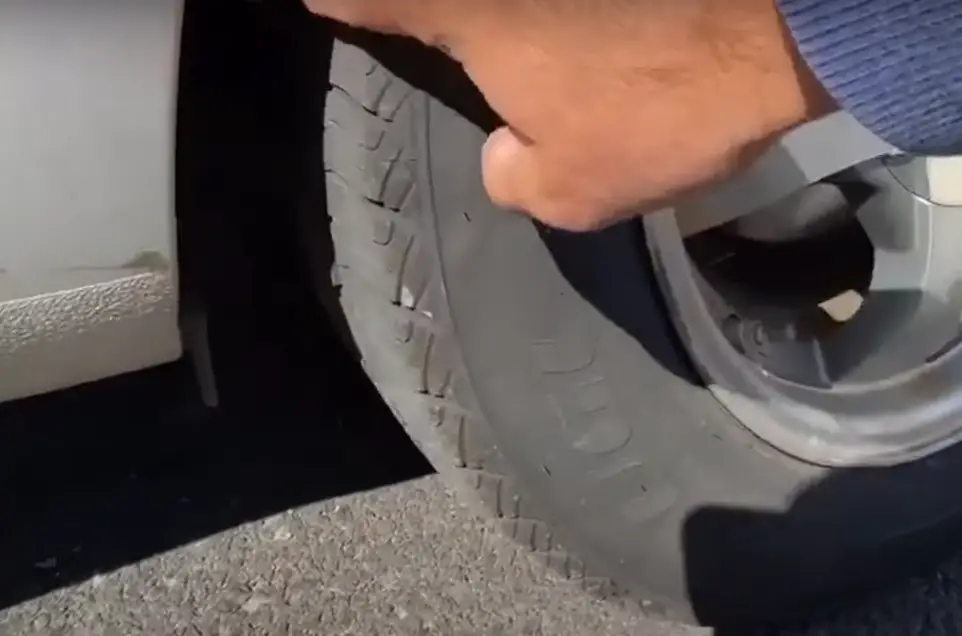Tire cupping occurs when the tread on a tire wears unevenly, resulting in a scalloped or cupped pattern across the surface of the tire. This can be caused by various factors such as improper wheel alignment, unbalanced tires, worn suspension components, or insufficient tire rotation.
Tire cupping, also known as scalloping, is a common but often misunderstood issue that can affect vehicle tires. It refers to an uneven wear pattern on the tire surface, characterized by a series of high and low points that create a wavy or scalloped appearance. This abnormal wear pattern can lead to a range of problems, including reduced tire lifespan, compromised vehicle handling, and increased road noise.
Contents
What is Tire Cupping?
Tire cupping is a type of uneven wear that occurs when the tread on a tire develops a series of dips or scalloped patterns along its circumference. This condition can appear on any tire, but it is most commonly found on the front tires of vehicles, particularly in those with front-wheel drive. The cupped areas of the tire are usually spaced evenly around the tire, and their depth can vary from mild to severe, depending on the extent of the issue.
This irregular wear pattern compromises the contact patch between the tire and the road, which can result in a bumpy and noisy ride. Moreover, it can affect the handling and stability of the vehicle, leading to safety concerns if left unchecked.

Causes of Tire Cupping
Tire cupping can be caused by a variety of factors, often involving a combination of issues related to the vehicle’s suspension, alignment, and tire maintenance. Below are some of the most common causes:
1. Suspension Issues
A vehicle’s suspension system is responsible for maintaining proper tire contact with the road surface. Worn-out or damaged suspension components, such as shocks, struts, or bushings, can lead to tire cupping. When these components fail, the tires may bounce excessively, causing the tire tread to lose consistent contact with the road. This bouncing effect can result in the uneven tread wear associated with tire cupping.
2. Wheel Misalignment
Wheel alignment refers to the angle and direction at which the tires make contact with the road. If a vehicle’s wheels are not properly aligned, it can cause uneven tire wear, including cupping. Misalignment can occur due to hitting potholes, curbs, or from general wear and tear over time. When the alignment is off, the tires are not positioned correctly, which can lead to irregular wear patterns.
3. Imbalanced Tires
Tire balancing ensures that the weight of the vehicle is evenly distributed across all four tires. When tires are not balanced correctly, they can develop uneven wear patterns, including cupping. An unbalanced tire may bounce or wobble as it rotates, leading to inconsistent contact with the road and causing the cupping effect over time.
4. Poor Quality or Defective Tires
Sometimes, the issue lies within the tire itself. Poor-quality or defective tires can be prone to uneven wear, including cupping. This is more common in budget tires that may not be constructed with the same level of quality control as higher-end options. Additionally, manufacturing defects, such as weak sidewalls or inconsistent tread compounds, can contribute to abnormal wear patterns.
5. Improper Tire Pressure
Maintaining the correct tire pressure is crucial for even tire wear. Both over-inflation and under-inflation can lead to uneven tire wear, including cupping. Under-inflated tires tend to wear on the edges, while over-inflated tires wear more in the center. In both cases, the tire can develop an uneven contact pattern with the road, leading to cupping.

Symptoms of Tire Cupping
Identifying tire cupping early can help prevent further damage and maintain vehicle safety. Here are some common symptoms to look out for:
1. Vibrations While Driving
One of the first signs of tire cupping is noticeable vibrations while driving, especially at higher speeds. The uneven tread pattern causes the tire to bounce or shake, leading to vibrations that can be felt through the steering wheel or seat.
2. Increased Road Noise
Cupped tires often produce a loud, rhythmic noise, especially when driving at higher speeds. This noise is caused by the uneven contact between the tire and the road, similar to the sound of a helicopter or a droning hum.
3. Visible Tread Wear
A visual inspection of the tires can reveal cupping. Look for wavy, scalloped, or uneven wear patterns on the tire tread. The dips or valleys between the raised areas are characteristic of cupping.
4. Poor Handling and Traction
Cupped tires can compromise the handling and traction of the vehicle. You may notice reduced grip, especially in wet or slippery conditions, and the vehicle may feel less stable when turning or braking.

How to Prevent Tire Cupping
Preventing tire cupping involves regular vehicle maintenance and being proactive about identifying and addressing potential issues. Here are some steps you can take to minimize the risk of tire cupping:
Regular Tire Inspections: Performing regular visual inspections of your tires can help identify early signs of cupping or other abnormal wear patterns. Check the tread depth, look for uneven wear, and inspect for any visible damage.
Proper Tire Rotation: Regular tire rotation is essential for even tire wear. Rotating your tires every 5,000 to 8,000 miles ensures that all tires wear evenly, reducing the risk of cupping and extending the overall lifespan of your tires.
Maintain Proper Tire Pressure: Always maintain the recommended tire pressure as specified in your vehicle’s owner’s manual. Check tire pressure regularly, especially before long trips or during seasonal temperature changes, to prevent under-inflation or over-inflation.
Wheel Alignment and Balancing: Have your vehicle’s wheel alignment and balancing checked regularly, especially after hitting a pothole or curb. Proper alignment and balancing help ensure even tire wear and prevent issues like cupping.
Inspect Suspension Components: Regularly inspect your vehicle’s suspension components, such as shocks, struts, and bushings, for wear and damage. Replacing worn or damaged suspension parts in a timely manner can prevent excessive bouncing and uneven tire wear.

Credit: atlanticmotorcar.com
Frequently Asked Questions
Here are some FAQs about tire cupping –
1. Can cupped tires be repaired or fixed?
Cupped tires cannot be “repaired” in the traditional sense because the damage is a result of the tread being worn unevenly. However, you can address the underlying cause, such as suspension issues or misalignment, to prevent further cupping. In some cases, rotating the tires can temporarily improve the ride quality, but the affected tire will eventually need to be replaced.
2. Is tire cupping dangerous?
Yes, tire cupping can be dangerous as it compromises the contact between the tire and the road, affecting the vehicle’s handling and stability. Cupped tires can also increase stopping distances and reduce traction, especially in wet or slippery conditions.
3. Can improper tire pressure cause cupping?
Yes, both over-inflated and under-inflated tires can contribute to cupping. Proper tire pressure is crucial for even tread wear and maintaining optimal tire performance. Regularly check and maintain the correct tire pressure to prevent this issue.
4. How often should I rotate my tires to prevent cupping?
It is recommended to rotate your tires every 5,000 to 8,000 miles or as specified in your vehicle’s owner’s manual. Regular tire rotation helps ensure even wear across all tires, reducing the risk of cupping.
5. Will an alignment fix cupped tires?
While proper alignment can prevent further cupping, it will not fix the damage already done to the tire. If cupping is detected, address the alignment issue to prevent additional wear, but the affected tire may still need to be replaced.
Conclusion
Tire cupping is a significant issue that can impact your vehicle’s performance, safety, and comfort. By understanding the causes and symptoms of tire cupping, as well as implementing preventive measures, you can reduce the risk of this uneven wear pattern and ensure a smoother, safer ride. Regular maintenance, including tire inspections, rotations, and proper suspension care, is key to preventing cupping and maintaining optimal tire health.